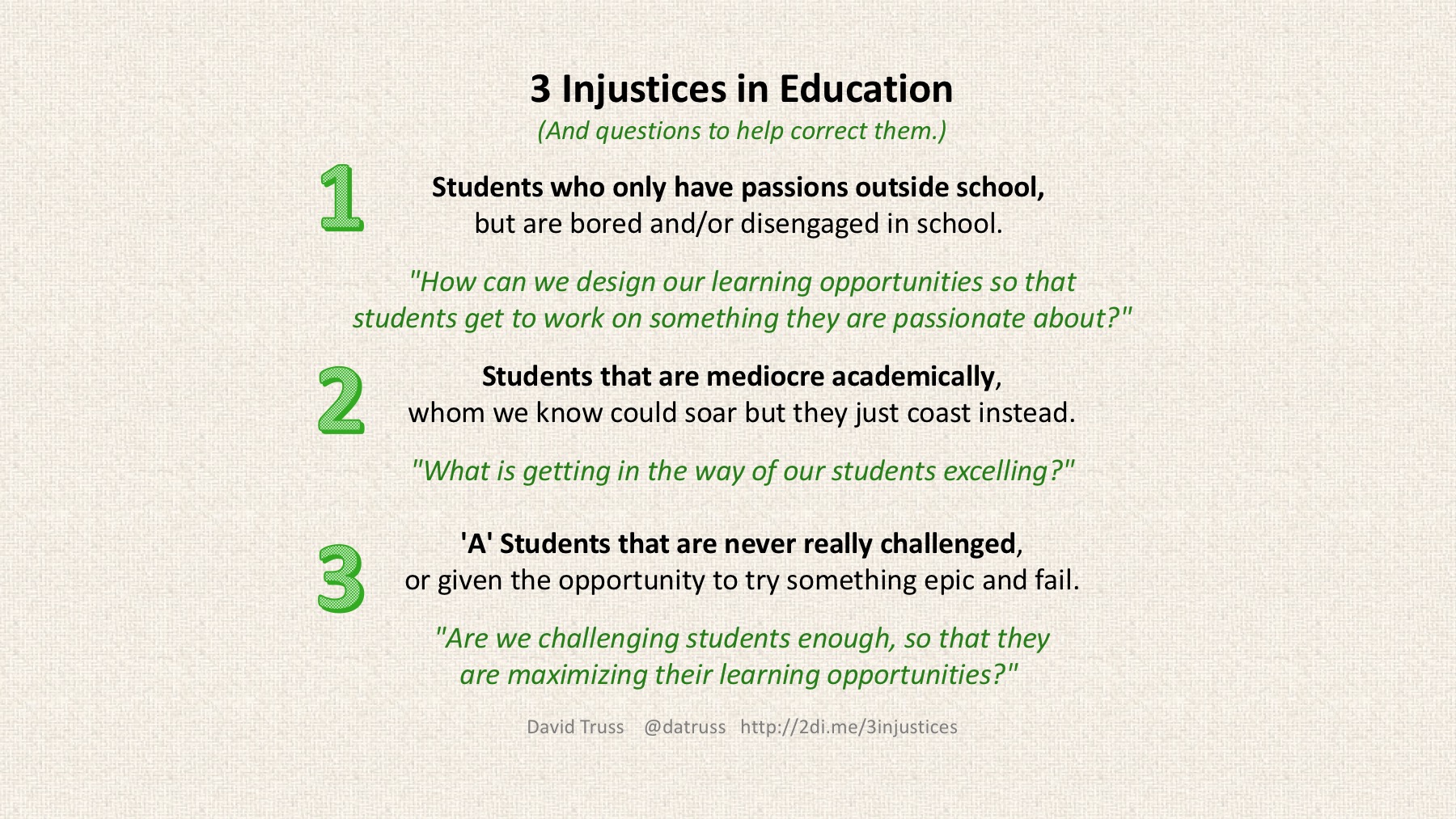Last month I was honoured to be interviewed on Corey Engstrom’s Teacher Tech Trails.
Near the end of the podcast, I mentioned the ‘greatest’ injustices that we tend to do in more traditional schools and classrooms to three different kinds of students. While I would question my choice of the word ‘greatest’, I think these students are worthy of mentioning and there are enough of them to ask ourselves what we can do to better meet their learning needs?
1. Students who only have passions outside school, in the ‘real world’, but are bored and/or disengaged in school. This is primarily about creating some relevance for the learner. This doesn’t mean that everything needs to be interest-based, or even entertaining, but that there are times when relevance comes not just from the content, but the learner’s interests.
The question we have to ask ourselves is, “How can we design our learning opportunities so that at some point during the school day, students get to work on something they are passionate about?”
Genius Hour is a great way for a teachers to play with this idea.
2. Student that are mediocre academically, whom we know could soar but they just coast instead. Sometimes these students are the ones that acts out in class, or just seems apathetic. Yet there might be one class or one teacher that gets this student to show what their potential is. Kids to well if they can.
The lack of engagement might stem from a learning challenge (academic), it might be personal challenges at home (social/emotional), or it might be that the student doesn’t feel connected to the school, peers or teacher. The question we have to ask ourselves is, “What is getting in the way of our student(s) excelling?”
3. The ‘A’ student. Yes, in many instances we do these students an injustice too! We have students who go all the way through school getting ‘A’s and yet are never really challenged, and never given the opportunity to try something epic and fail.
Every student will encounter failures later in life, ‘in the real world’, so if we don’t challenge them in school, we have not given them the tools to face adversity later on. The question we have to ask ourselves is, “Are we challenging students enough, so that they are maximizing their learning opportunities?”
—–
Previously I asked the question, “How do you know when students are learning?” and the response I gave was, “When they are asking the right questions.” As educators we too have to ask the right questions, and I hope that the 3 I’ve asked here are helpful to you:
“How can we design our learning opportunities so that at some point during the school day, students get to work on something they are passionate about?”
“What is getting in the way of our student(s) excelling?”
“Are we challenging students enough, so that they are maximizing their learning opportunities?”

—–
Below is the podcast where, in addition to the 3 injustices mentioned above, I also share quite a bit about what we do at Inquiry Hub Secondary School. Check out the school’s students page, to see some passion projects students are working on.
You can listen to the full podcast above…
Or, visit Corey Engstrom’s website to subscribe to Teacher Tech Trails. Thanks for the interview Corey, it was great to ‘meet’ you on Google Hangout!
Also published on Medium.
